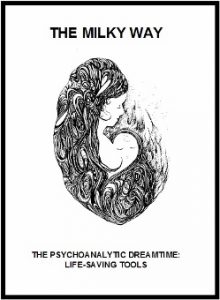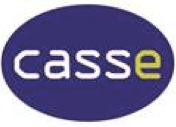The Milky Way
 THE MILKY WAY
THE MILKY WAY
Psychoanalytic Dreamtime: Life-Saving Tools.
By Pamela Nathan, Director, CASSE Aboriginal Australian Relations Program
BOOKLET – paper back, 120 pages
COST: $25 each
ORDERS: Contact CASSE – Phone 0450 540 366 Email enquiries@casse.org.au
Author’s personal note as a psychoanalytic psychotherapist
Join me on a psychoanalytic journey of the Milky Way. I try to tell a simple story of the psychoanalytic dreamtime that can be understood by many using metaphors and language associated with dreaming. When you have finished reading The Milky Way you will have some understanding of the key beliefs and practice of psychoanalysis.
In this booklet difficult words commonly used in psychoanalysis will be explained. Language from the Arrernte Aboriginal people of Australia is also used. Words like jilpie means elder. Aboriginal words will be italicised.
The stars of the Milky Way, our galaxy, take us from night to day. Psychoanalysis takes us from the darkness of the unconscious to the light of knowing and understanding who we are and who we can be. The mind and our formation as a people are like The Big Bang, the black voids, the sun, the supernova and the celestial sphere.
How are these elements like the mind? Each emerges from a mystery, to become real and embody an action or way of seeing the world. Our mind can be bright and expansive like the sun or dull and retracting like a void.
By reading this booklet you might learn something that will change your mind and save your life. You might find your life can be an ordinary journey of the extraordinary and filled with emotional dances and stories spinning into starry galaxies. Who knows you might even want to sign up for some psychoanalytic psychotherapy.
TABLE OF CONTENTS:
Psychoanalysis
1. Psychoanalytic beliefs
Psychoanalytic theories
Two worlds
The conscious or known world
Two mindsets to the conscious world
Unconscious world or unknown world
How can we get to know this unknown world?
Structural model of the mind
Phantasies
How do we get to know our phantasies?
Life and death forces: Eros and Thanatos
Eros
Thanatos
Anxieties
The psychic structure
Defences
What are these defences?
Internal world
2. Mother and Babe
What’s so important about the Mother-Babe relationship?
Two split worlds for the Babe
Mother and Babe: The terrors
Rock-a-bye Baby
The painful (BAD) internal world of the Babe
The pleasurable (GOOD) internal world of the Babe
The defences of Babe
The dance of the good enough Mother: Love
Good-enough Mother
Holding
Insufficient holding
Don’t forget about Fathers!
3. Psychic growth: Growing up
Introjection and identification
Two world positions for Babe
The paranoid-schizoid position
The depressive position
Reality principle and the good-enough Mother
Secure attachment
Insecure attachment
Circle of security
Babe growing up
4. Babe girls and boys
Psychosexual development in infancy
The myth of Oedipus
The Oedipal and Electra complex
Oedipal pains
Development of guilt and the superego
Infant and toddler losses
Losses: New siblings
The tragic and transformative view
Psychic growth
Symbol formation
Symbols
The thinking couple: Mother and Babe
Thinking: The third dimension
The self
The past has a living presence
5. Psychopathology: Mental Illness
Godlike superego
A fortress
Pathological organisations
Borderline states
Psychosis
Depression
Psychopathy
Violence
Trauma states
The true and false self
The grandiose self
The disgusting self
Voids or stars on The Milky Way
6. Psychotherapy
Psychotherapy ingredients
Practical psychoanalysis
Psychic country
The Big Bang
Therapy home
Truth
Pain
Here and now
No memory and no desire
Transference and Countertransference
Relationships
Relatedness
Emotional contact
Borning
Working through
Dreaming
Fighting deadly demons
Transformations
Emotional riches
Mental growth
The tool box
Insight and action
7. The tool box
Pack up your troubles
Container and contained
Standing still
Emotional intelligence
Mental boot camp
New worlds
What psychoanalysis can offer?




